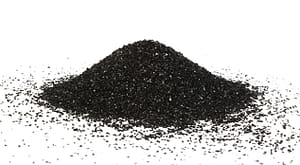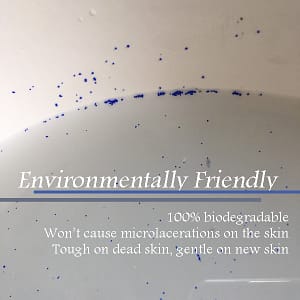Crazy for Charcoal!
We all seen the funny videos of people using charcoal masks and how they don’t come off but do you know why we use charcoal on our face in the first place?
Ingredient Highlights
 Charcoal
Charcoal
Where Does it Come From?
Charcoal is made from wood, by heating it at very high temperatures (800 to 1,200 degrees) with very low oxygen concentrations. This slow process removes methane, hydrogen, and tar from the wood and reduces the weight of the wood by 75 percent, leaving behind a concentrated, black substance made mostly of carbon. At this point, charcoal can be used as fuel and burns cleaner and hotter than wood. But it’s the “activation” step that makes charcoal become a superhero, capable of saving lives. Activation may be done with chemicals or with steam (we, of course, use the steam-activated variety). The charcoal is steamed at very high temperatures, opening up the carbon structure and further eliminating the non-carbon elements. In the end, what remains is an incredibly porous version of carbon, with tons of open spaces with which to bind other stuff. – MindBodyGreen.com
Benefits
– It is an all natural ingredient which can mean that you will have a very low chance of having a reaction to it
– Oil absorbing as well as pore refining. Because of how finely grained the powder is, it is able to get into all the little nook and crannies of your face and pull the impurities out of your skin and pores.
– Its natural antibacterial and antifungal properties make it ideal for skin and body products
– No negative effect on the environment
Kaolin Clay
What is Kaolin Clay?
It is a naturally occurring clay substance mostly found in soils that have developed from the chemical weathering of rocks in hot, moist climates. A good example of such a climate is the tropical rain forest. It is also called China clay, White clay, White Cosmetic clay, Hydrated Aluminum Silicate, Kaolinite clay amongst other names. –Durablehealth.net
Benefits
– It is very nourishing, soothing and calming to many different skin types
-Reduces the production of sebum (oil) in the skin without drying out the skin
– It is used as a detoxing and cleansing of the skin
Benefits
– Made from 100% biodegradable Jojoba wax so there is no negative effect to the environment and they won’t end up in our water system or the ocean
– Because of their small size they will not cause micro-lacerations on the skin which lead to premature wrinkles and provide bacteria access to the skin.
– Tough on dead skin but gentle on new skin
Pumice Powder
Where does Pumice Come from?
Formed from violent volcanic activity, lightweight, frothy pumice is similar to glass in physical and chemical makeup, but unlike glass, pumice is a much softer abrasive—fine-ground pumice is the softest abrasive media you can use and ideal for applications where the quality of the finished surface is paramount. –Hesspumice.com
Benefits
-Neutral pH and chemically formed
-Abrasive enough on dead and rough skin but gentle on new skin
– A great replacement for microbeads because it will not harm the environment
Activated Charcoal Facial Mask & Scrub
This 2in1 facial mask and scrub will leave your skin refined, smoothed and softer. The ingredients are a perfect match to pull out the impurities of the skin with the help of the charcoal and the resurfacing of the skin with the jojoba beads and pumice powder.
-How to Use It-
Apply thin layer to face and let dry for 5 minutes. Apply a small amount of water to area and with circular motions, exfoliate your face. Rinse with water and pat dry. Follow with a toner and moisturizer.
Why Should we Exfoliate?
Beautiful skin takes work. Exfoliating your entire body helps prevent
- body acne in many places below your neck, such as the chest, back and arms
- helps you avoid ingrown hairs by preventing dead skin cells from clogging hair follicles where you’ve shaved or waxed.
- helps even out skin tone and keeps your skin hydrated and soft.
- encourages cellular turnover for softer, younger looking skin
How often should you scrub?
Scrubbing two or three times a week is plenty. If your skin is very sensitive, you might prefer to do it less. Keep in mind that the purpose of exfoliating is to remove skin cells that are dead. You shouldn’t have to scrub too hard or too often to make that happen. If you do, you’re likely to take off healthy cells which might leave your skin looking red and feeling sore. Rubbing the particles firmly but gently on your skin in circular motions should be enough to exfoliate properly. Happy Scrubbing!
Check out our Sugar Scrubs to find your favorite!



